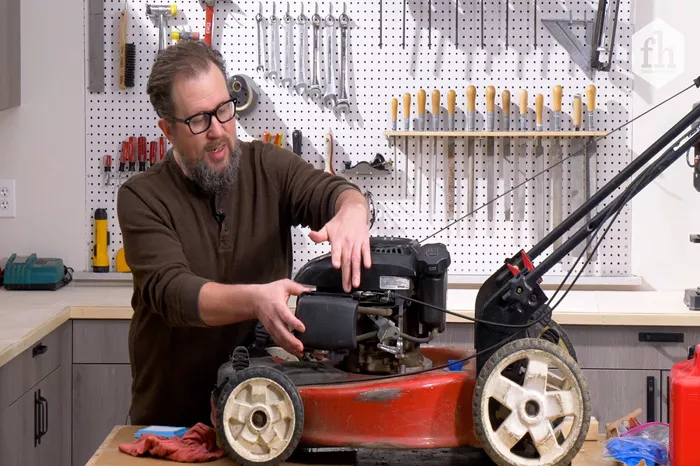Maintaining your lawn mower is essential for ensuring its longevity and optimal performance. One critical component that often goes overlooked is the fuel filter. This article will guide you through understanding the importance of the fuel filter, identifying its location on various types of lawn mowers, recognizing signs of a clogged filter, and providing step-by-step instructions for inspection and replacement.
Fuel Filter Importance
The fuel filter plays a vital role in your lawn mower’s operation. Its primary function is to prevent dirt, debris, and other contaminants from entering the engine through the fuel system. By ensuring that only clean fuel reaches the engine, the fuel filter helps maintain smooth operation and prevents potential damage to engine components.
A clean fuel filter allows for efficient fuel flow, which is crucial for the engine’s performance. Conversely, a clogged or dirty filter can restrict fuel flow, leading to issues such as difficulty starting, sputtering, and decreased power. Regular maintenance of the fuel filter is, therefore, essential for the health of your lawn mower.
Common Locations
The location of the fuel filter varies depending on the type of lawn mower:
Push Mowers
In push mowers, the fuel filter is typically found along the fuel line between the gas tank and the carburetor. It may be a small, cylindrical component that is easily accessible for inspection and replacement.
Riding Mowers
Riding mowers often have the fuel filter mounted near the fuel pump or inline along the fuel hose. It is usually located under the hood, attached to the frame, or near the engine compartment. Accessing the fuel filter may require removing some panels or components.
Electric Mowers
Electric mowers do not have a fuel filter since they run on battery power and do not use gasoline. Therefore, fuel-related maintenance is not applicable to electric mowers.
Signs of a Clogged Fuel Filter
Recognizing the symptoms of a clogged fuel filter can help prevent more significant engine problems. Common signs include:
Difficulty Starting: A clogged fuel filter can restrict fuel flow, making it hard to start the engine.
Sputtering: Inconsistent fuel supply can cause the engine to sputter during operation.
Decreased Power: The engine may lose power or struggle under load due to insufficient fuel flow.
Visible Dirt Accumulation: Inspecting the fuel filter may reveal visible dirt or debris, indicating the need for replacement.
If you notice any of these symptoms, it’s advisable to inspect and, if necessary, replace the fuel filter to restore optimal performance.
Step-by-Step Inspection
Inspecting the fuel filter involves a few straightforward steps:
Turn Off the Mower: Ensure the engine is off and cool to prevent accidents.
Locate the Fuel Line: Identify the fuel line running from the gas tank to the carburetor or fuel pump.
Follow the Fuel Hose: Trace the fuel hose to find the fuel filter, which is usually a small, cylindrical or rectangular component attached to the fuel line.
Inspect the Filter: Look for signs of dirt, debris, or discoloration. If the filter appears clogged or dirty, it should be replaced.
Replacement Guide
Replacing the fuel filter is a manageable task with the right tools and precautions:
Pinch Off the Fuel Line: Use hose pinch-off pliers to prevent fuel leaks during the replacement process.
Remove the Clamps and Old Filter: Loosen the clamps securing the fuel filter and carefully remove the old filter from the fuel line.
Install the New Filter: Insert the new fuel filter into the fuel line, ensuring it is oriented correctly. Most filters have an arrow indicating the direction of fuel flow, which should point towards the engine.
Secure the Clamps and Check for Leaks: Tighten the clamps to secure the new filter and inspect the connections for any fuel leaks.
Maintenance Tips
Regular maintenance of the fuel filter is crucial for the longevity and efficiency of your lawn mower:
Routine Inspection: Check the fuel filter periodically for signs of clogging or damage.
Scheduled Replacement: Replace the fuel filter according to the manufacturer’s recommendations or if you notice performance issues.
Use Clean Fuel: Always use clean, fresh gasoline to minimize the risk of contamination.
Proper Storage: Store your lawn mower in a clean, dry place to prevent debris from entering the fuel system.
By adhering to these maintenance practices, you can ensure that your lawn mower operates smoothly and efficiently throughout its lifespan.
Conclusion
The fuel filter is a small but essential component of your lawn mower’s fuel system. Its role in preventing contaminants from reaching the engine is critical for maintaining performance and preventing damage. Understanding the location of the fuel filter, recognizing signs of clogging, and performing regular inspections and replacements are key steps in lawn mower maintenance. By taking these proactive measures, you can extend the life of your lawn mower and enjoy reliable performance season after season.
Related topics:
- How to Clean Out Gas Tank on Lawn Mower
- How to Fix a Cracked Lawn Mower Hood
- How to Fix a Broken Lawn Mower Throttle Cable

